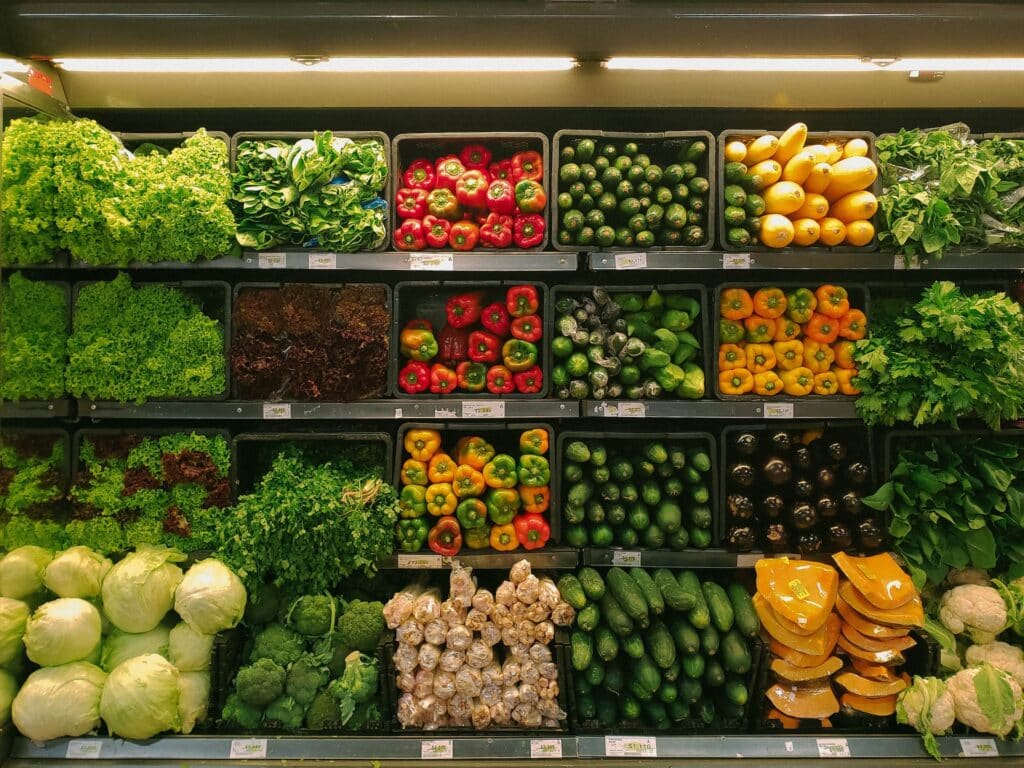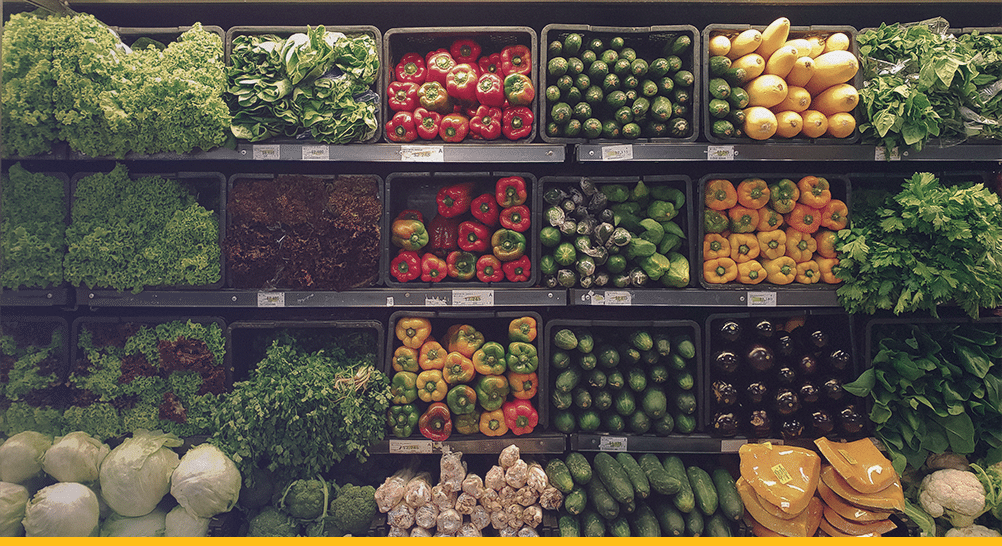Grocers can improve the customer experience in supermarkets in several ways to enhance customer satisfaction. With an increasingly competitive market in the grocery industry, ensuring customers have a positive experience has never been more crucial. According to Bain & Company:
“Companies that excel at the customer experience grow revenues 4%-8% above their market.”
By implementing innovative strategies, grocers can create a more positive and memorable shopping experience for their customers, leading to increased loyalty and improved business performance. An essential piece to achieving successful customer engagement is testing your great ideas out. Testing gives you a clear window into how customers will respond before you invest in large-scale implementation. Below are some strategies and tips for grocers to consider when striving to improve the customer journey at every touchpoint:
Employee training and development
One of the most essential, and potentially most overlooked, means of improving the customer experience in supermarkets is investing in the employee experience. Properly trained employees are better equipped to handle customer complaints and issues. They can resolve problems more efficiently, reducing customer frustration and dissatisfaction. Proper training ensures that employees have in-depth knowledge about the products or services they are selling. This knowledge allows them to answer customer questions accurately, offer recommendations, and provide valuable insights. Training programs also teach employees essential customer service skills, such as active listening, empathy, and effective communication. These skills enable employees to better understand customer needs and provide tailored solutions.
Training also teaches employees effective upselling and cross-selling techniques. When done correctly, this can increase revenue and provide customers with additional value. Training also encourages cross-functional collaboration, ensuring that employees from different departments work together to provide a seamless customer experience. Investment in employee development reduces turnover, as employees feel valued and see opportunities for growth within the organization. Lower turnover means more experienced staff, which can lead to better customer experiences.
Retailers have tested to see if raising employee salaries would have any impact on sales outcomes and have found that increased wages led to increased revenue. Additionally, retailers have consistently seen an increase in revenue when testing staffing models that provide employees with enhanced sales tactics.
Store layout and design
Layout and design are crucial elements in shaping the grocery store customer experience. A well designed layout can help customers navigate the store more easily. By organizing products logically and providing clear signage, customers can find what they need quickly, leading to a more efficient and less frustrating shopping experience.
By conducting in-store tests, retailers can determine what layouts most resonate with customers. A specialty retailer believed that by shifting their departments around, they would see an increase in revenue. But knowing this significant a change was not small task, they wanted to be sure the change would be worth the time and labor investment. They tested and learned their predictions were accurate, enabling them to confidently institute the changes to improve the customer shopping experience across their fleet.
Product selection
Offering a wide variety of products allows customers to find what they need and explore new options. When customers have choices, they are more likely to find products that suit their preferences, dietary needs, or cultural preferences. This variety enhances customer satisfaction and improves the overall customer experience in supermarkets.
But product selection isn’t just about variety; it’s also about providing the right product at the right price point. One retailer opted to switch up sizing options in their clothing department, decreasing less-purchased sizes and increasing depth for selling sizes. They tested and saw a huge lift in both sales and transaction count.
Quality and freshness
Ensuring the quality and freshness of products is essential. Customers value grocery stores that consistently provide fresh produce, meats, and dairy products. By sourcing fresh, regularly checking experiration dates, and removing expired items from shelves, grocers can guarantee standards that build trust and encourage repeat visits.
Freshness doesn’t always have to mean high-maintenance. One grocer tested to see if ordering from a vendor was more effective than in-house production. They discovered a lift in both revenue and in units sold.
Customer service
Knowledgeable and helpful employees can assist customers in finding products, provide recommendations, and answer questions. Efficient and effective problem resolution is critical to improving the customer experience in supermarkets. When issues arise such as damaged products, pricing discrepancies, or dissatisfaction with a purchase, responsive and empathetic customer service can turn a negative experience into a positive one. Empathetic employees who actively listen to customer concerns and show understanding contribute to a positive experience.
Wanting to know what labor and staffing model could best support the customer experience, a retailer tested three different models. They were able to pinpoint the most effective model and improve customer satisfaction.
Convenient shopping options
Having multiple touchpoints for customers to purchase products helps make the shopping experience more accessible, efficient, and enjoyable. E-commerce, home delivery, curbside pickup, mobile and contactless payment, personalized shopping lists, in-store navigation tools, extended store hours, loyalty programs, and mobile coupons and discounts help connect users with unique needs to the products they seek.
Many retailers recognize the value to offering omnichannel options, but they struggle to know how to create a seamless integration of the two. Data for each is often managed separately, and accruing data on how online advertising impacts in-store purchase behavior can be challenging. However, retailers are utilizing A/B testing to help inform effective omnichannel integration and advertising attribution–exploring everything from paid search to geo-targeted advertising.
Checkout experience
Long lines and extended wait times at the checkout can lead to frustration and impatience among customers. Efficient cashiers, well-organized checkout counters, and fast payment processing systems help ensure customers can complete their purchase quickly. Friendly and helpful cashiers and store staff can make a significant difference in the customer experience. Accepting a variety of payment methods also can support customers at this pivotal touchpoint.
Multiple retailers have tested self-checkout options, working to balance the benefits of self-checkout against loss prevention. Basket analysis is also an effective tool used to optimize the checkout experience. By knowing what items are frequently purchased together, grocers can optimize product placement at checkout locations.
Price transparency
When companies openly share their pricing information, customers are more likely to believe they are getting a fair deal. On the flip side, lack of price transparency can lead to frustration and friction in the buying process. Hidden fees, unexpected charges, or unclear pricing can result in negative customer experiences.
A retailer considered a new pricing structure to raise prices in alignment with a clear value proposition. Thankfully, they tested the change before large-scale rollout and learned that customer dissatisfaction with the pricing change led to negative sales lift.
Special promotions and discounts
Discounts and promotions improve the customer experience in supermarkets by helping customers feel like they are getting more value for their money. When customers perceive that the are getting a good deal, they are more likely to have a positive experience with a brand. Promotions may also be as a way to attract new customers and introduce your brand to a wider audience.
Wanting to run a promotion but unsure what promotion would work best, a retailer tested a BOGO free promotion against a 50% off promotion on a high-ticket item and were surprised to see a better response to buy one get one free.
Community engagement
Grocery-community interactions foster a sense of belonging and shared values. By actively participating in the local and social causes, businesses demonstrate their commitment to their customers and society at large. Engaging with the community also provides businesses with a platform to collect valuable feedback and insights directly from their customers. Additionally, community engagement strengthens customers’ connection to the brand, motivating them to recommend it to others and defend it in the wake of controversies.
While community engagement matters, choosing the most effective way to engage matters even more. One retailer tested to see if a toy drive would increase sales and discovered a flat lift.

Cleanliness and safety
Well kept premises create a positive first impression and enhance the customer experience in supermarkets by creating a sense of comfort and well-being. They are more likely to stay longer, browse, and make purchases in a clean, safe space. Cleanliness also enhances the perceived quality of products and strengthens trust in a brand. Retailers who maintain a clean and hygienic store environment, especially in high-touch areas, and who implement safety measures, such as hand sanitizing stations, are likely to build loyalty and win repeat business.
Adding security and extra lighting in parking lots, a retailer tested to see how customers would respond. They discovered a lift to revenue due to the enhanced sense of safety and theft reduction.
Environmental responsibility
Businesses that prioritize sustainability often enjoy a more positive brand image and reputation. Consumers who align with a company’s sustainability values are more likely to become repeat buyers and brand advocates, leading to long-term relationships. Sustainable practices can lead to cost savings, which some businesses pass on to customers in the form of lower prices or improved value. When retailers actively work to reduce their impact through measures like waste reduction, energy efficiency, and responsible sourcing, customers can feel good about supporting them.
Wanting to promote organic produce, a grocer lowered the cost to more closely align with regular produce and tested to learn the impacts of the adjustment. The result: significant lift in organic purchases.
Innovation and technology
When it comes to retail tech transforming the customer experience, the sky’s the limit. Everything from advanced security to geolocation and RFID tech to digital wallets and cyrptocurrencies can improve and enlighten the shopping journey.
Technological advances can be as big as AI integration on produce scales or as small as updated produce refrigeration systems. Grocers are testing all types of tech in their stores to evaluate if the lift in sales and product preservation can offset the investment in the tech.
Feedback mechanism
The best way to learn how a customer feels is to ask. Providing multiple channels for customers to offer feedback — such as surveys, comment cards, or online reviews — provides direct insights into customer opinions, perceptions, and experiences. By collecting feedback, retailers gain a deeper understanding of what customers like and dislike about their products, services, and interactions. Customers can help highlight pain points, bottlenecks, or issues in the customer journey that may otherwise go unnoticed. Feedback serves as a catalyst for continuous improvement, ensuring retailers stay competitive and relevant.
A retailer tested to see if creating a designated space where customers could rate their satisfaction and provide feedback would increase store revenue. Not surprisingly, it did. Customers appreciated having space to be seen and heard.
Personalization
Personalized recommendations, content, and offers are more relevant to the customer, increasing the likelihood of engagement and conversion. Customers are more likely to respond positively to messages that align with their interests and past behavior.
Multiple retailers have tested marketing that takes into account the preferences of Spanish-speaking communities. Results have consistently shown increases in foot traffic with these personalized marketing campaigns.
Efficient inventory management
Ensuring that products are consistently available when customers want to purchase them enables customers to find the products they need, prevents stockouts or backorders, and reduces frustration and disappointment. Well-managed inventory minimizes carrying costs, including storage and holding costs, allowing savings to be passed on to customers in the form of competitive prices and improved value.
Retailers have found that testing inventory initiatives improves customer satisfaction, enhances BOPIS processes, and drives top line sales due to greater shelf availability.
The opportunities to improve the customer experience are manifold, and it can be tricky to know which are the best opps to invest in. Testing therefore is a critical component to ensuring that your investment in your customers will not only increase their satisfaction but also will, by extension, increase your bottom line.
For more insights into how testing can support the customer experience, check out these resources:
Immersive shopping: Using creative technology to enliven the customer experience
MarketDial retail testing with Kum & Go — A safety net to plan for the unexpected
How DICK’S Sporting Goods leverages testing to take data-driven action




